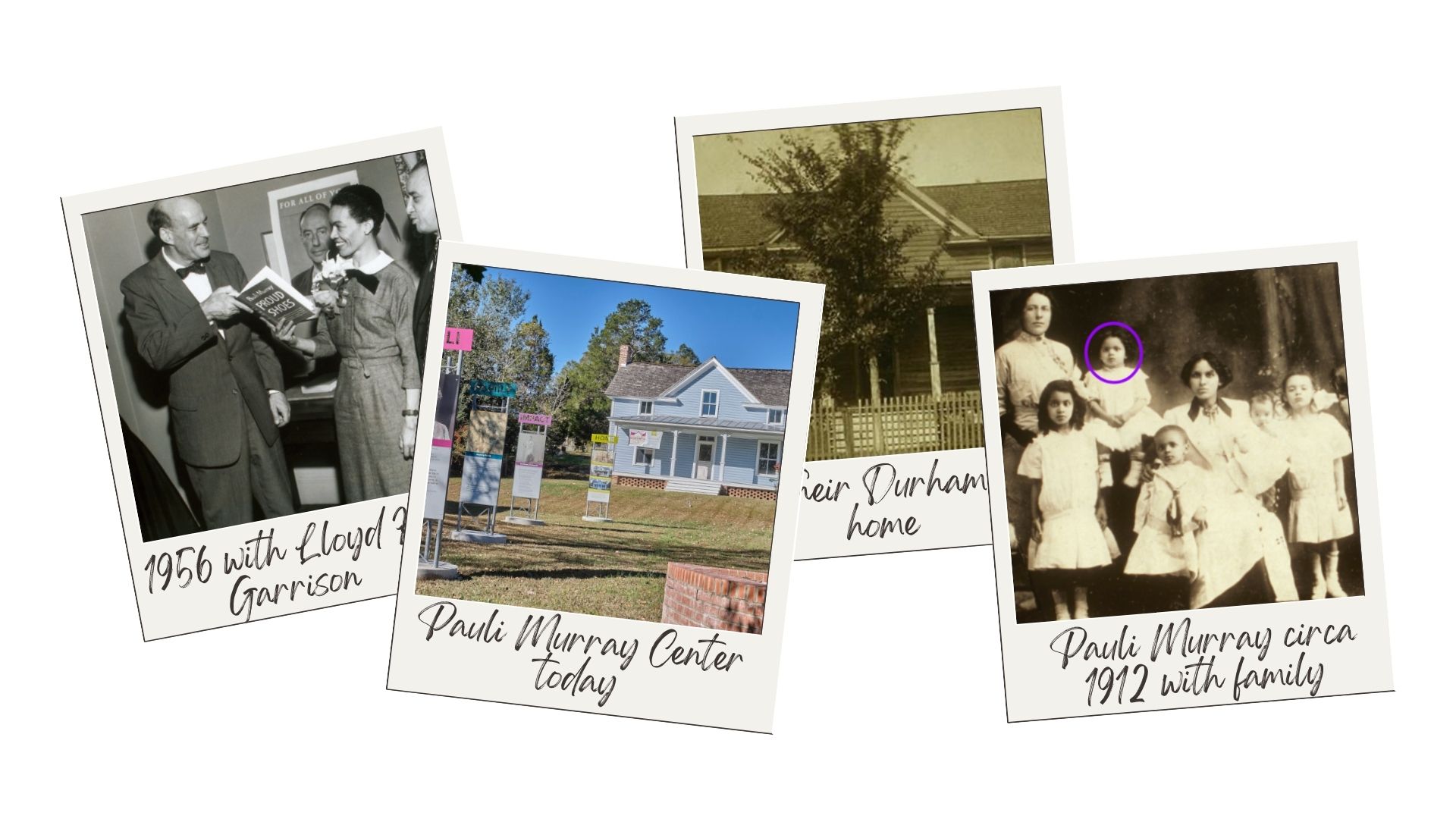
Graphic by Corinna Collins with photos courtesy of the Pauli Murray Center and Schlesinger Library at Harvard University.
Monday, March 4, 2024
By Corinna Collins
Nestled behind a large front yard, a charming blue house with a wide front porch serves as a historical and social justice center for residents of Durham. Aside from its inviting, exterior appearance, the Pauli Murray Center is a National Historic Landmark that preserves, celebrates and extends the legacy of the groundbreaking lawyer, writer, educator and priest.
Born in Baltimore, Maryland in 1910, Murray moved to Durham following the death of her mother. They graduated from Hillside High School prior to enrolling at Hunter College. While living in New York and earning a degree in English literature, Murray worked for the Works Project Administration, taught remedial reading in New York City Public Schools and began writing for NAACP magazines. They also began to explore gender identity and expression during this time, even speaking to doctors about the possibility of gender-affirming medical care.
In the 1940s, Murray returned to the South where they began a public campaign fighting for the right to enroll at formerly all-white UNC Chapel Hill. Though this effort lacked the support of the NAACP and was ultimately unsuccessful, it gave Murray the opportunity to befriend other activists and cemented their name in the university’s history.
Murray went on to graduate from Howard University Law School and became a civil rights lawyer and active member of the Congress of Racial Equality. Murray’s writings, including editorials, poems, short narratives and books, became more and more popular as their influence grew. They especially focused on the role of Black women in the Civil Rights Movement and the struggles they faced. Later in life, Murray used their voice as a professor, lawyer and activist to explore issues at the intersection of politics, economics, race and gender. Following the death of their partner, Murray became the first Black female presenting American to become an Episcopal priest.
Murray’s legacy is multifaceted, with connections to race, gender, sexuality, education, religion and more. They serve as an inspiration to many, including Dr. S. Charmaine McKissick-Melton. On Jan. 16, as a part of UNC Hussman’s MLK Jr. Day celebration titled “Inspiring Inclusion, Igniting Change,” McKissick-Melton spoke to UNC students.
“That’s a good name,” McKissick-Melton said. “Inspiring inclusion, igniting change — because I had to.”
For Dr. McKissick-Melton, civil rights activism is a family business. The daughter of Floyd McKissick, UNC’s first Black student, Dr. McKissick-Melton joined picket lines and marches before she could read. McKissick-Melton was asked how today’s students could become more involved in their community, and she had only one answer.
“Pauli Murray,” McKissick-Melton said. “The Pauli Murray Center. That’s where my heart is.”
Located on Carroll Street in the home Murray shared with their grandparents and aunt, the Pauli Murray Center has a mission to “lift up” the Rev. Dr. Pauli Murrray’s life and legacy “in order to address enduring inequities and injustices” as well as a vision to “actively work toward fairness and justice across race, class, sexuality, gender, and spiritual practice”.
The center’s current events calendar features tours, guest speakers, book clubs, film screenings and more. Its activities and offerings reflect the intersectional identity of Murray themself and their work to uplift those in need of a voice.
Though Murray passed in 1985, the work of the Pauli Murray Center ensures that their legacy remains alive and well in Durham.
Edited by Ava Dobson